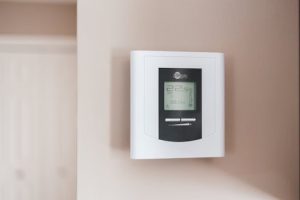The Rise of Smart Home Platforms: Unifying Devices for Seamless Control
The world of technology is constantly evolving, and the rise of smart home platforms is no exception. Gone are the days of having separate devices for each task in our homes – now, with the advancement of technology, we can control everything with just a few taps on our phones or a simple voice command. Smart home platforms have revolutionized the way we live, bringing convenience, comfort, and efficiency to our homes. In this article, we will explore the rise of smart home platforms and how they are unifying devices for seamless control.
The Beginning of Smart Home Platforms
The concept of smart homes has been around for decades, but it wasn’t until the early 2000s that we saw the first glimpse of what smart home platforms could become. Companies like Nest and Philips were among the pioneers in creating devices that could connect to the internet and be controlled remotely through a smartphone or computer. These devices included smart thermostats, lighting systems, and security cameras.
However, the real turning point came in 2014 when Google acquired Nest. This acquisition marked the beginning of a significant shift in the smart home industry. With Google’s vast resources and influence, the company was able to bring smart home devices to the mainstream market.
The Rise of Voice Assistants
No discussion about smart home platforms would be complete without mentioning the rise of voice assistants. Voice assistants such as Amazon’s Alexa and Google Assistant have become an essential part of smart home platforms. These AI-powered devices allow us to control our homes with simple voice commands, making the integration of smart home devices even more seamless.
Voice assistants have become increasingly sophisticated over the years, and they can now do much more than just turn on the lights or adjust the thermostat. They can make calls, answer questions, set reminders, and even order groceries. With voice assistants, our homes have truly become “smart,” and we no longer have to lift a finger to get things done.
Unifying Devices for Seamless Control
One of the main benefits of smart home platforms is their ability to unify devices for seamless control. In the past, each smart device came with its own app, making it challenging to manage multiple devices simultaneously. But with smart home platforms, all devices can be controlled through one central hub, making it easier to manage and monitor our homes.
For example, if you have a smart lighting system, a smart thermostat, and a security camera, you can control all of them through a single app on your phone. You can set schedules, create scenes, and even create automations, all through the same app. This level of control and customization was not possible before the rise of smart home platforms.
Interoperability of Devices
One of the most significant advantages of smart home platforms is their interoperability. Interoperability refers to the ability of different devices to communicate and work together seamlessly. In the past, because smart devices used different protocols and technologies, it was difficult for them to work together. This meant that consumers were limited to devices from the same brand or manufacturer.
However, with smart home platforms, interoperability is a key feature. Most platforms use the same protocols, such as Wi-Fi, Bluetooth, and Z-Wave, making it possible for devices from different brands to communicate with each other. This allows consumers to mix and match devices from different brands, giving them more flexibility and choice when it comes to creating their smart homes.
The Future of Smart Home Platforms
The future of smart home platforms looks bright, with more and more companies investing in this technology. The market for smart home devices is also expected to grow significantly in the coming years, making it a lucrative industry for companies to tap into.
Moreover, with the advancement of technology, we can expect to see even more innovative and advanced smart home devices in the future. Companies are already exploring new features such as facial recognition for security cameras, AI-powered assistants for better voice commands, and even fully automated homes that can anticipate our needs.
The Need for Strong Security Measures
As we continue to embrace smart home platforms, it’s essential to address the issue of security. With all our devices connected to the internet, the risk of cyber-attacks and hacking increases significantly. Therefore, it is crucial for companies to invest in robust security measures to protect consumers’ data and privacy.
Conclusion
The rise of smart home platforms has transformed the way we live, bringing us closer to the concept of a fully automated home. With the convenience, comfort, and efficiency they offer, it’s no surprise that more and more people are adopting this technology. As smart home platforms continue to advance, the possibilities for a connected home are limitless, and we can’t wait to see what the future holds.










